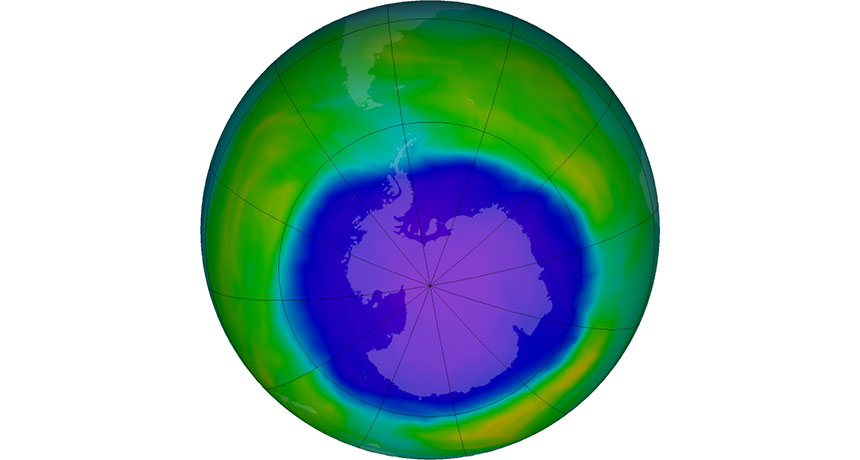Despite volcanic setback, Antarctic ozone hole healing
New 3-D simulation filters out natural variation in long-term trend

OZONE SNAPSHOT The Antarctic ozone hole is finally healing, scientists say, even though that recovery has been somewhat obscured by recent volcanic activity that temporarily boosted the hole (bluish area centered over Antarctica) to record size last October.
Ozone Hole Watch/NASA







